
Arnica is a genus of perennial, herbaceous plants in the sunflower family (Asteraceae). The genus name Arnica may be derived from the Greek arni, "lamb", in reference to the plants' soft, hairy leaves. Arnica is also known by the names mountain tobacco and, confusingly, leopard's bane and wolfsbane—two names that it shares with the entirely unrelated genus Aconitum.

Iris lacustris, the dwarf lake iris, is a plant species in the genus Iris, subgenus Limniris and in the section Lophiris. It is a rhizomatous, beardless perennial plant, native to the Great Lakes region of eastern North America. It has lavender blue or violet-blue flowers, a very short stem and long fan-like green leaves. It is cultivated as an ornamental plant in temperate regions. It is closely related to Iris cristata.
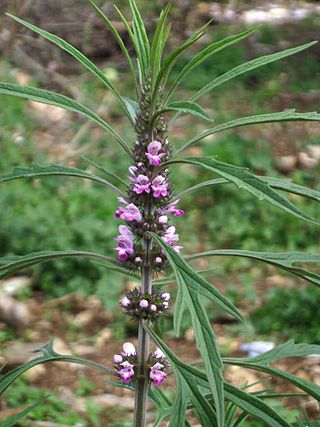
Leonurus sibiricus, commonly called honeyweed or Siberian motherwort, is an herbaceous plant species native to China, Mongolia, and Siberia. It has verticillaster inflorescence. It is naturalized in many other parts of the world, including South, Central and North Americas.

Aconitum columbianum is a species of flowering plant in the buttercup family known by the common names Columbian monkshood or western monkshood.
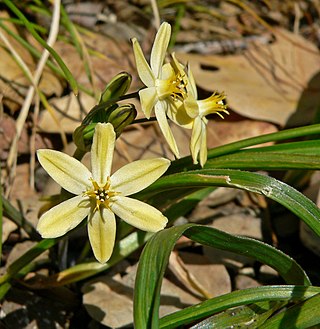
Triteleia ixioides, known as prettyface or golden star, is a monocotyledon flowering plant in the genus Triteleia. It is native to northern and central California and southwestern Oregon, where it can be found in coastal and inland coniferous forests and other habitat. It is a perennial wildflower growing from a corm. It produces one to two basal leaves up to 50 centimeters long by 1.5 wide. The inflorescence arises on an erect stem up to 80 centimeters tall. It is an umbel-like cluster of several flowers each borne on a pedicel up to 7 centimeters long. The flowers are variable in size, measuring one to nearly three centimeters in length. They are pale to bright yellow, or sometimes purple-tinged white. There are six tepals with darker midveins in shades of green, brown, or purple. The lobes are funnel-shaped and may open flat or somewhat reflexed. The six stamens form a fused tube that protrudes from the corolla; they have broad, flat filaments and whitish, yellowish, or blue anthers.
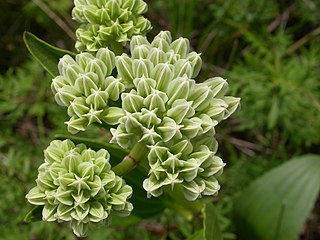
Arnoglossum plantagineum also known as tuberous Indian-plantain, groovestem Indian plantain or prairie Indian plantain, is a North American species of Arnoglossum in the sunflower family. The Latin specific epithet plantagineum refers to the leaves of the plant which are similar to those of a plantain.
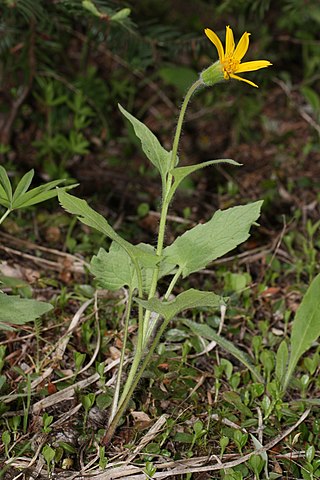
Arnica cordifolia is a species of arnica in the sunflower family, known by the common name heartleaf arnica. It is native to western North America.

Arnica sororia is a North American species of flowering plant known by the common name twin arnica. It is native to Western Canada and the Western United States. It grows in grasslands and in conifer forests, as well as the sagebrush steppe.

Solidago nemoralis is a species of flowering plant in the family Asteraceae. It is native to North America, where it is widely found in Canada and the United States. Its common names include gray goldenrod, gray-stem goldenrod, old-field goldenrod, field goldenrod, prairie goldenrod, dwarf goldenrod, and dyersweed goldenrod.

Arnica dealbata is a species of Californian plants in the tarweed tribe within the aster family

Helianthus decapetalus, known by the common names thinleaf sunflower and thin-leaved sunflower, is a perennial forb in the family Asteraceae. It is native to the Eastern and Central United States and Canada, from New Brunswick west to Iowa, Wisconsin, and Ontario, south as far as Georgia and Louisiana. It produces yellow composite flowers in late summer or early fall.

Arnica lanceolata is a North American species of flowering plant in the family Asteraceae, known by the common name clasping arnica or lanceleaf arnica. It has a disjunct (discontinuous) distribution in western North America and northeastern North America.

Euphorbia missurica, commonly called prairie sandmat, or Missouri spurge, is a species of flowering plant in the spurge family (Euphorbiaceae). It is native to North America, where it is found primarily in area of the Great Plains. Its natural habitat is in dry, often calcareous areas, including glades, bluffs, and open woodlands.
Bistorta plumosa is a flowering plant species in the family Polygonaceae, or buckwheat family. Common names for Bistorta Plumosa include meadow bistort. Bistorta plumosa is monoecious, with flowers containing both male and female reproductive parts that are pollinated by insects. Birstorta plumosa flowers annually in the summer months from May to June and can be found in habitats ranging from moist to dry sites and tundra in North America, Alaska, Yukon, the Northwest Territory, and East Asia.

Symphyotrichum robynsianum is a species of flowering plant in the family Asteraceae native to northeastern North America. Common names include Robyns's aster, longleaf aster, and long-leaved aster.

Boechera retrofracta is a species of flowering plant in family Brassicaceae. The common names include reflexed rockcress.
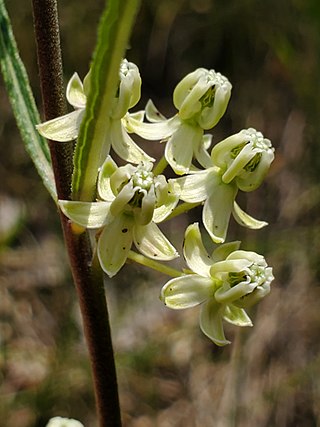
Asclepias stenophylla is a species of flowering plant in the dogbane family (Apocynaceae) commonly called slimleaf milkweed and narrow-leaved green milkweed.

Bartonia virginica is species of flowering plant in Gentianaceae. It is the commonly called yellow screwstem or yellow bartonia and it is an annual species with small pale green to yellow flowers.
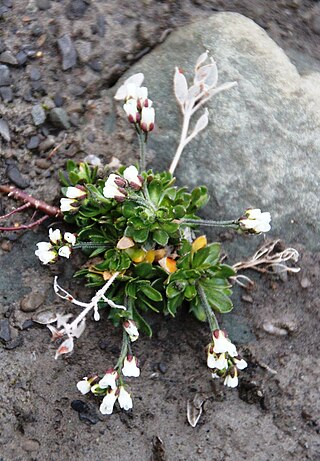
Draba norvegica is a species of flowering plant in the mustard family (Brassicaceae) know by the common names Norwegian draba and Norwegian whitlow grass.

Juncus marginatus is a species of flowering plant, it is a type of rush with the common names of margined rush and grass-leaf rush.



















